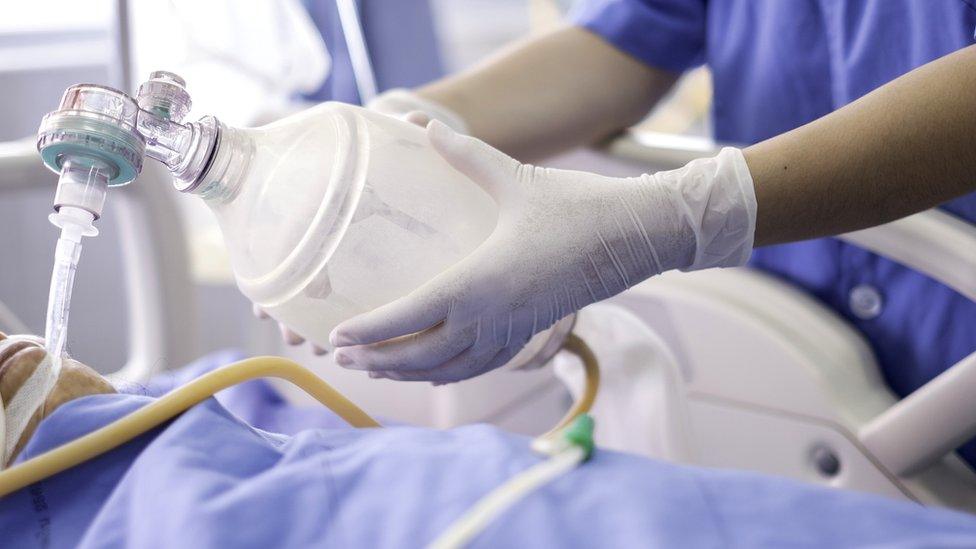Covid patients 'less likely to die than in April'
- Published

Coronavirus patients admitted to intensive care have a better chance of surviving now than they did in April, according to the dean of the Faculty of Intensive Care Medicine.
But these gains levelled off over the summer, Dr Alison Pittard said.
The proportion of patients admitted to critical care who die fell by almost a quarter from the peak and as much as half in hospitals overall.
It is too soon to know the survival rate for patients admitted this autumn.
A better understanding of the disease has allowed doctors to treat patients better, including using the steroid dexamethasone and less invasive types of ventilation.
Promising figures
The Intensive Care National Audit and Research Centre (ICNARC), which reports on the outcomes of patients who end up in critical care units, has begun separating out the cases of people admitted after 1 September.
The Health Service Journal reported these figures, which it said suggested a dramatic fall in the proportion of patients dying between the first wave (up until the end of August) and the second (from 1 September).
On average, 39% of patients admitted to critical care died between the start of the pandemic and the end of August and this appears to have fallen to just under 12%.
But while this appears a dramatic fall at first glance, Dr Pittard cautioned this was most likely to be a product of the fact that not enough time has passed to know the outcomes of patients admitted to hospital since the beginning of September.
Many will remain in intensive care and until a patient is either discharged or dies, they do not appear in the data.
Though it is too soon to know what mortality will look like in the second wave, we do know that mortality was higher at the beginning of the first wave than it was at the end, she said.
The BBC previously reported this fall in the death rate among patients admitted to hospital with coronavirus, when University of Oxford researchers estimated it had fallen from 6% to 1.5% between the peak in April and June.
It is difficult to match deaths to hospital admissions in general, though, whereas critical care patients' outcomes are regularly reported.
Summer improvement
Looking at the outcomes of patients admitted to critical care, more than half were dying around the peak of the epidemic in April.
By the beginning of July it had fallen to about 40% and remained roughly at that level until the end of the summer.
Based on a much smaller number of patients admitted between the 1 September and the start of October, the death rate now appears to be about a quarter of that level.
However, Dr Pittard believes it is too soon to say whether this is a genuine fall.
'Recognise the disease'
"There are lots of reasons why the mortality rate reduced over time but the biggest thing is we have learnt more about the disease," Dr Pittard said.
"In the early days we were, almost immediately that people were admitted, putting them in ICU, sedating them and putting them on a ventilator.
"We started to use more non-invasive ventilation and patients were doing very well," she said.
That means more patients are treated using things like CPAP machines - a face mask with a pump that controls airflow - rather than being sedated and having a tube put into their airway.
"We saw the effect on blood clotting. We recognise the disease a lot earlier," Dr Pittard added.
The use of a steroid called dexamethasone which reduces inflammation is also thought to have contributed to falling death rates, although it is hard to say how much.
And the type of patients ending up in hospital may be a factor too, as a much higher proportion were in the 30-59 age bracket in September, compared with the peak.
But it has been suggested that if intensive care units get too full, the death ratio could rise again.
Follow Rachel on Twitter, external

RAISING AWARENESS OF TESTICULAR CANCER: Chris Hughes is on a mission
LOOKING AFTER YOUR MENTAL HEALTH: Escape to the rainforest with the Mindul Mix
